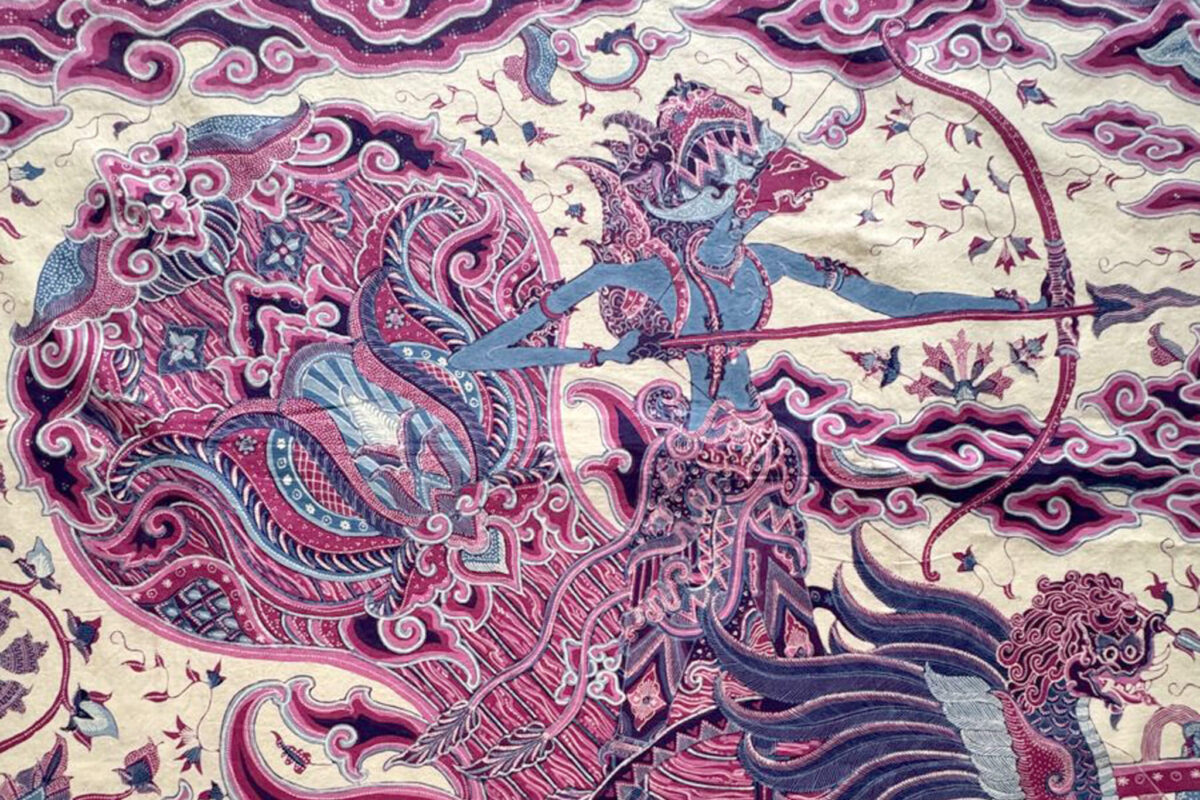The world of art often surprises us with its ability to weave together seemingly disparate threads of history, culture, and tradition. The latest exhibition by WOVENSOULS, titled “Confluence – Hindu Art from Indonesia,” is a testament to this beautiful amalgamation, shedding light on the profound influence of Hinduism on Indonesian textile art.
The historical bond between India and Indonesia is no secret. From legends like Boeeta Bandaan, which narrates the maritime ventures between the two lands, to the grand Hindu temples in Prambanan dedicated to the divine trinity of Shiva, Vishnu, and Brahma, this connection is deeply rooted. The vibrant Hindu culture of Bali and the shared textile motifs in Toraja ceremonial cloths and Patola ikats further strengthen this bond.
Yet, the revelation of Hinduism’s influence on Cirebonese culture through batik art is relatively new and astoundingly profound. Jaina Mishra, the passionate collector and gallerist at WOVENSOULS, embarked on this journey of discovery after stumbling upon a Batik piece echoing scenes from the revered Hindu epic, the Ramayan. This ignited her pursuit to unearth more such textile masterpieces, culminating in the acquisition of several intricate artworks.
This online exhibition proudly displays 16 Cirebonese batik textiles by the late artist Pak Tomik, all deeply influenced by Hindu tales, predominantly the Mahabharat and Ramayan. These large-scale Batiks, known as Wayang Batik, were traditionally used as captivating backdrops for folk theatre performances. They are not mere fabrics but canvases telling tales of gods, heroes, and legends. Some pieces boast up to fifty meticulously crafted figures, each rendered using the superfine batik canting pen.
The true magic of these textiles lies in their texture and the sheer mastery over the medium. The finesse with which each narrative unfolds, the delicate play of colors, and the harmonious blend of Hindu and Indonesian motifs is a treat for the eyes. The textile’s tactility, combined with its rich narrative, makes it a sensory experience, bridging the gap between touch and sight.
For art aficionados, interior design enthusiasts, and museum curators, these batik masterpieces are not just pieces of cloth but a confluence of histories, cultures, and artistry. They serve as a reminder that art, in its many forms, is a universal language, seamlessly intertwining stories from distant shores and epochs. In the intricate folds of these Batiks lies the essence of two cultures, whispering tales of a shared past and a harmonious present.
